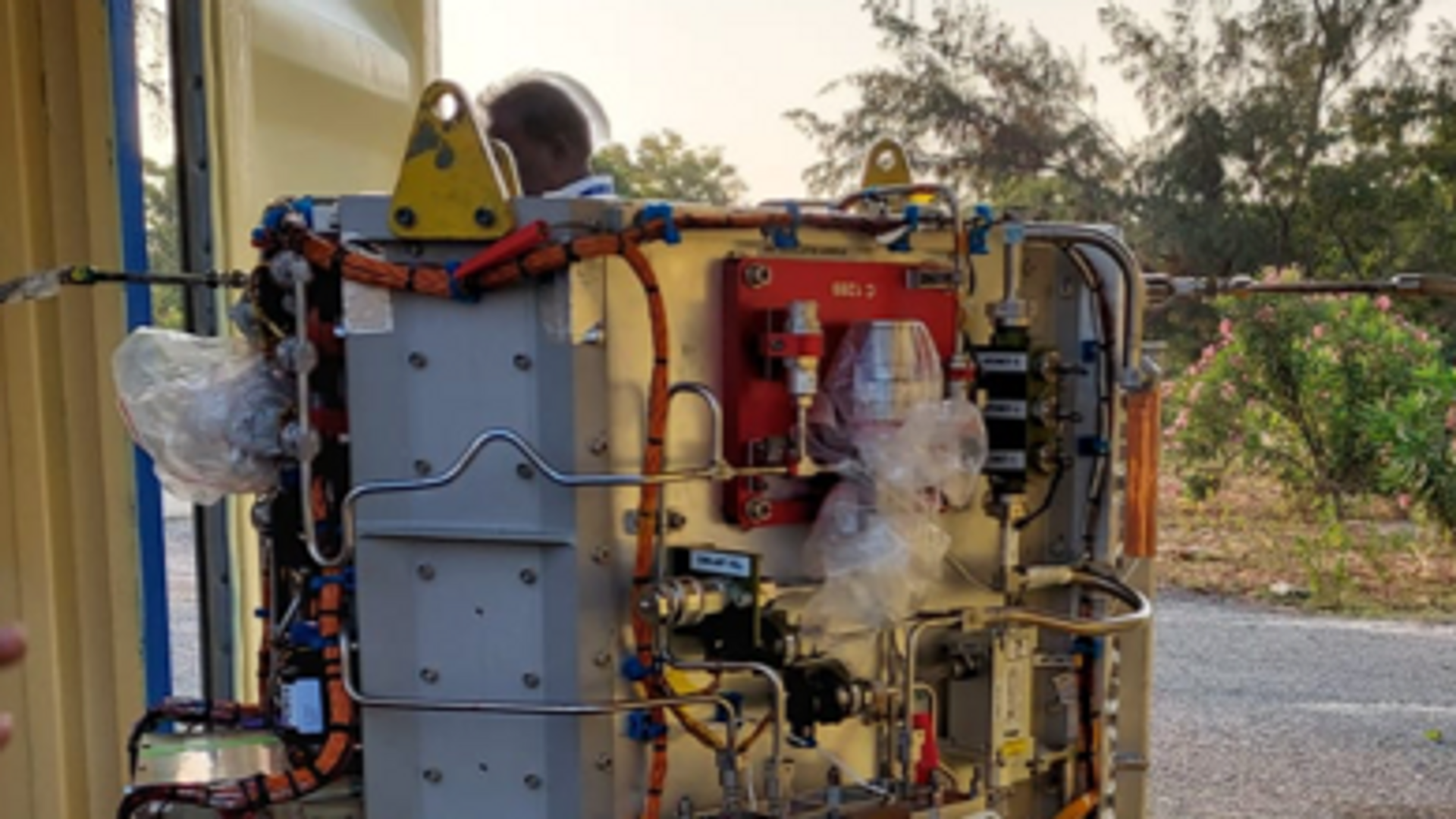https://sputniknews.in/20240105/indian-space-agency-generates-power-from-hydrogen-and-oxygen-gases-in-orbit--6099436.html
Indian Space Agency Generates Power From Hydrogen and Oxygen Gases in Orbit
Indian Space Agency Generates Power From Hydrogen and Oxygen Gases in Orbit
Sputnik India
The Indian Space Research Organisation (ISRO) announced on Friday the successful generation of power from hydrogen and oxygen gases during a critical test on its orbital platform as part of the PSLV-C58 mission.
2024-01-05T17:35+0530
2024-01-05T17:35+0530
2024-01-05T17:35+0530
science & tech
science & tech
india
indian space research organisation (isro)
polar satellite launch vehicle (pslv)
international space station (iss)
space satellite
space industry
space exploration
space rocket
https://cdn1.img.sputniknews.in/img/07e8/01/05/6098415_0:0:390:219_1920x0_80_0_0_9013931f2414b8ac159e11b29385ebe2.png
The Indian Space Research Organisation (ISRO) has successfully generated power from hydrogen and oxygen gases in space, it has reported.The hydrogen fuel cell is a cutting-edge electrochemical device that generates hydrogen and gases, resulting in the emission of pure water and heat as byproducts. Fuel cells operate based on the principle of converting chemical energy from hydrogen and oxygen into electricity directly through electrochemical reactions. The process is similar to how batteries function but without any combustion involved. Fuel cells have the potential to replace traditional vehicle engines and standby power systems. India's space agency tested a PEM fuel cell, marking a significant development as this technology could pave the way for the future orbital laboratory.
https://sputniknews.in/20231006/india-soon-to-have-its-own-space-station-isro-chief-4633312.html
india
international space station (iss)
Sputnik India
feedback.hindi@sputniknews.com
+74956456601
MIA „Rossiya Segodnya“
2024
Deexa Khanduri
https://cdn1.img.sputniknews.in/img/07e6/0c/13/138923_52:0:533:481_100x100_80_0_0_cadf23d341691fc65ff2b22fd1afe584.jpg
Deexa Khanduri
https://cdn1.img.sputniknews.in/img/07e6/0c/13/138923_52:0:533:481_100x100_80_0_0_cadf23d341691fc65ff2b22fd1afe584.jpg
News
en_IN
Sputnik India
feedback.hindi@sputniknews.com
+74956456601
MIA „Rossiya Segodnya“
Sputnik India
feedback.hindi@sputniknews.com
+74956456601
MIA „Rossiya Segodnya“
Deexa Khanduri
https://cdn1.img.sputniknews.in/img/07e6/0c/13/138923_52:0:533:481_100x100_80_0_0_cadf23d341691fc65ff2b22fd1afe584.jpg
x-ray polarimeter satellite, xposat, space mission, polarisation of light, polarimetry tool, astronomers, celestial objects, comets, chandrayaan 3 lunar mission, aditya l1, indian space research organisation, isro, astronomy, environments, s somanath, indian national space academy, emissions, black holes, neutron stars, active galactic nuclei, pulsar wind nebulae, chemical makeup, spectroscope, payloads, polarimeter instrument in x-rays, polix, x-ray spectroscopy and timing, xspect, full form
x-ray polarimeter satellite, xposat, space mission, polarisation of light, polarimetry tool, astronomers, celestial objects, comets, chandrayaan 3 lunar mission, aditya l1, indian space research organisation, isro, astronomy, environments, s somanath, indian national space academy, emissions, black holes, neutron stars, active galactic nuclei, pulsar wind nebulae, chemical makeup, spectroscope, payloads, polarimeter instrument in x-rays, polix, x-ray spectroscopy and timing, xspect, full form
Indian Space Agency Generates Power From Hydrogen and Oxygen Gases in Orbit
Deexa Khanduri
Sputnik correspondent
Delhi recently announced it plans to set up its own space station by 2025 to act as an "eye in the sky" and help monitor friends and foes 24/7.
The Indian Space Research Organisation (ISRO) has successfully generated power from hydrogen and oxygen gases in space, it has reported.
"ISRO has successfully tested a 100 W class
polymer electrolyte membrane (PEM) fuel cell based power system (FCPS) in its orbital platform, PSLV Orbital Experimental Module (POEM) 3, launched onboard PSLV-C58 on January 1," the space agency said in a statement.
The hydrogen fuel cell is a cutting-edge electrochemical device that generates hydrogen and gases, resulting in the emission of pure water and heat as byproducts. Fuel cells operate based on the principle of converting
chemical energy from hydrogen and oxygen into electricity directly through electrochemical reactions.
The process is similar to how batteries function but without any combustion involved.
Fuel cells have the potential to replace traditional vehicle engines and standby power systems. India's space agency tested a PEM fuel cell, marking a
significant development as this technology could pave the way for the future orbital laboratory.



